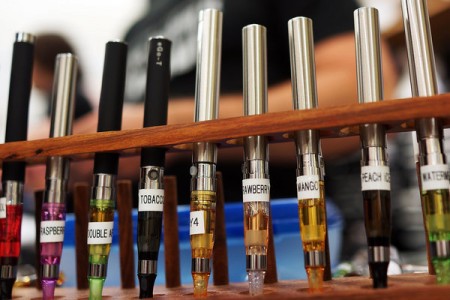
E-cigarettes, battery-powered devices that deliver nicotine in an aerosol mist, are becoming increasingly popular among middle and high school students.
WASHINGTON — The share of middle and high school students who use e-cigarettes doubled in 2012 from the previous year, federal data show. The rise is prompting concerns among health officials that the new devices could be creating as many health problems as they are solving.
One in 10 high school students said they had tried an e-cigarette last year, according to a national survey by the Centers for Disease Control and Prevention, up from one in 20 in 2011. About 3 percent said they had used one in the last 30 days. In total, 1.8 million middle and high school students said they had tried e-cigarettes in 2012.
“This is really taking off among kids,” said Dr. Thomas Frieden, director of the C.D.C.
E-cigarettes are battery-powered devices that deliver nicotine that is vaporized to form an aerosol mist. Producers promote them as a healthy alternative to smoking, but researchers say their health effects are not yet clear, though most acknowledge that they are less harmful than traditional cigarettes. The Food and Drug Administration does not yet regulate them, though analysts expect that the agency will start soon.
Thomas Briant, executive director of the National Association of Tobacco Outlets, which represents 28,000 stores, said the study “raises too many unanswered questions,” for the data to be used for policy making. It was unclear, for example, whether students who tried e-cigarettes were using them regularly or only once. He pointed out that selling them to minors is now illegal in many states.
One of the biggest concerns among health officials is the potential for e-cigarettes to become a path to smoking among young people who otherwise would not have experimented. The survey found that most students who had tried e-cigarettes had also smoked traditional cigarettes.
But one in five middle school students who said they had tried e-cigarettes reported never having smoked a conventional cigarette, raising fears that e-cigarettes, at least for some, could become a gateway. Among high school students, 7 percent who had tried an e-cigarette said they had never smoked a traditional cigarette.
Dr. Frieden said that the adolescent brain is more susceptible to nicotine, and that the trend of rising use could hook young people who might then move into more harmful products like conventional cigarettes.
Murray S. Kessler, the chairman, president and chief executive of Lorillard, a North Carolina-based tobacco company that owns Blu eCigs, said that the rise in youth usage was “unacceptable,” and added that the company was “looking forward to a regulatory framework that restricts youth access” but does not “stifle what may be the most significant harm reduction opportunity that has ever been made available to smokers.”
The sharp rise among students mirrored that among adult users and researchers said that it appeared to be driven, at least in part, by aggressive national marketing campaigns, some of which feature famous actors. (Producers say the ads are not aimed at adolescents.) E-cigarettes also come in flavors, which were banned in traditional cigarettes in 2009 and which health officials say appeal to young people.
“Kids love gadgets and the marketing for these things is in your face,” said Gary A. Giovino, a professor of health behavior at the University at Buffalo. He added that the rising use of e-cigarettes risked reversing societal trends in which smoking had fallen out of fashion.
About 6 percent of all adults — not just smokers — reported having tried e-cigarettes in 2011, according to a C.D.C. survey, about double the number from 2010. Data for adults in 2012 are not yet available, a spokesman said.
*This news story was resourced by the Oral Cancer Foundation, and vetted for appropriateness and accuracy.

Leave A Comment
You must be logged in to post a comment.